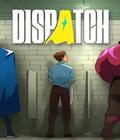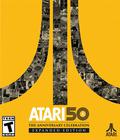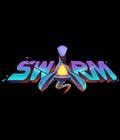Virtual reality has lent itself well to simple gameplay concepts and arcade shooters. To name the most prominent example, Space Pirate Trainer worked well because its concept was easy to pick up but difficult to master. It didn't need much room to play, and it ran on almost every available VR platform. Swarm isn't too different in theory, but that it pulls some serious witchcraft with a movement system that looks like it should be nauseating but isn't. Swarm is one of the most addictive arcade experiences I have played in VR to date. Here is how we fared with the title running on the Quest 2.
Narrative isn't something one can expect from an action-oriented arcade-style game. Swarm has a serviceable story that sets the tone for the experience and ties the different worlds into one package. It uses static comic strip interludes to progress the story, but you may as well skip those distractions and jump into the action. If you do pay attention, you likely won't get more out of it than that you're an important badass who is humanity's only hope to defeat the robot invasion. (The robots prefer to attack in swarms, of course.) The story isn't the reason for playing Swarm, but thankfully, the gameplay carries the experience quite admirably.
Swarm is a relatively straightforward affair, with 25 levels across five worlds and five boss fights. Each stage features floating platforms to provide anchor spots for grappling, occasional environmental hazards to avoid, and loads of enemies that force you to move and shoot with precision. While your grab button on either controller shoots a grapple hook, the trigger buttons shoot your weapons on either side, and you cannot grapple and shoot with the same hand at the same time. Those are the basics, and it's quite natural to learn as you go. The early tutorial challenges introduce the basics, and within minutes, a few tons of scrap metal are shooting at you from all corners of the map. As you progress through the 25 stages, you'll hit a wall because Swarm has many more nuances to consider if you want to beat every level on medium difficulty. There is an easy mode that isn't as punishing and a higher difficulty for a second playthrough, so you can adjust the experience to suit your expertise.
Swarm's biggest achievement is its movement system. It's smooth to swing from platform to platform, and thanks to a recent update, the swinging mechanics are much more reliable since the game's initial release. You'll want to keep moving to avoid incoming threats from enemies. Changes in direction and swinging horizontally rather than vertically, which can leave you floating up in the air and makes you an easy target, are the first things you need to get used to. Heat-seeking missiles and enemies add further pressure to move intelligently around the small areas in each stage. Hazards and enemies in the stages add caveats to how you move, such as needing to either avoid or destroy mines to clear your way through (or around) a given level. It's pure joy to grapple around a stage, and as you get used to the intricacies, such as adding tension to the grapple to gain height and speed at the right time, it plays fluidly and becomes addicting — and that's before you add gunplay to the mix.
If I had to describe Swarm in a sentence, it would likely be "Spider-Man trapped in an old arcade cabinet and with guns." Aiming feels responsive and easy enough, and most levels revolve around racking up the most points within a given time frame. That boils down to shooting everything that moves, but not everything is an easy target. Basic swarms fly around until they vanish, so they're an easy target for points, with bonus points if you get them in one shot.
Things start shooting back, forcing you to prioritize them over scoring cheap points. Some enemies are rather powerful, create unsurmountable laser arrays, or may shield or revive other enemies over time. You must learn what each enemy does to help you counteract dangerous elements. Even though they look similar, the variety of enemies makes Swarm addicting to play. You always need to be on your toes and make the right decision if you want to set a new high score or just survive. In later stages and worlds, the difficulty can ramp up significantly, which can also be quite frustrating, but the moment you do surmount these challenges usually makes the struggles worthwhile.
In addition to regular guns, you have an array of skills and more powerful guns at your disposal. What kind of an action game would Swarm be if it didn't include slow motion as a skill? Slow motion is not only fun to use but also super effective, especially when enemies get too close or aggressive. You can zip to platforms or enemies to either quickly change direction or close distances. These skills are limited but are recharged at a decent rate as you swing from platforms. You'll want to use them because there's no benefit to saving them. On top of that, the game spawns special weapons on platforms that can be used for a limited time, such as a heat-seeking rocket or plain grenade launchers. The special weapons have gotten me out of a pickle several times and added some variety to the arsenal.
Once you get the hang of skills and special weapons, it's down to using the available tools to your advantage. Combos and multipliers usually increase as you kill more enemies at once or in a row, and collecting shards adds to your combo meter. Not all levels are the same; some occasionally mix things up by challenging you to collect shards within a given time frame or kill a certain number of enemies. We also want to point out that each world ends in increasingly difficult and screen-filling boss fights.
Once all is said and done, Swarm is a solid offering in terms of content backed up by very fun and fluid gameplay, but it can quickly lose its appeal. Apart from additional challenges in each level or climbing the leaderboard, there is little to reward repeatedly playing the 25 stages. The stages aren't spectacularly different from one another, usually boiling down to a new and slightly different reorganization of platforms with a fresh background. In any other game, this may be a deal-breaker, but Swarm's core gameplay plays so great and is so addicting that it outweighs a bit of repetition. It's also worth noting that the developer plans on further updates that may even include multiplayer in some form — so the last word in terms of content has yet to be spoken.
Let's get back to comfort. I cannot say how developer Greensky Games achieved it, but given the amount of movement and speed, it's remarkable how accessible the game is in terms of motion sickness. By default, comfort options aren't applied. I've handed the game to friends who are new to VR, and none of them had any issues with nausea when swinging and shooting across several stages. Comfort vignettes are available if you need them, but no one has resorted to that option yet, which is a huge compliment given the gameplay style. There's also a newly added phobia mode that reduces phobia-inducing effects, such as being eaten by a shark when falling to your death in the early stages. There's not much more than that, but thankfully, it isn't needed.
The overall presentation is obviously scaled back from PC VR, but it looks and runs very well directly on the Quest 2. Things can get blurry or look oversharpened at times, but the game runs almost flawlessly on the Quest 2 no matter what's currently on display. The audio, on the other hand, is forgettable at best. Music is present but doesn't stand out, and the soundscape isn't useful for spatial awareness, so don't expect to pick up on approaching enemies by ear without seeing them. This can sometimes cause disorientation, since you can't know what's around you without actually looking. While the game has snap-turning with the right analog stick, it was more effective to physically turn around; you'll need quite more space if you intend to play Swarm in this way.
Swarm is something of a one-trick pony, but that pony is quite a noble steed. What it sometimes lacks in variety, it makes up with satisfying movement and truly addictive combat gameplay. It kept me coming back to try to clear a level just one more time, and it's a great showcase title for less-experienced players to demonstrate the capabilities of untethered VR using the Quest 2. If you're itching for a good arcade shooter in VR or to finally live out your Spider-Man fantasies, Swarm is worth a look.
Score: 8.0/10
More articles about Swarm











 Swarm is a fast-paced, arcade-style grapple shooter, with quick sessions, bright colorful worlds and globally competitive leaderboards that takes you back to the glory days of arcade games.
Swarm is a fast-paced, arcade-style grapple shooter, with quick sessions, bright colorful worlds and globally competitive leaderboards that takes you back to the glory days of arcade games.









